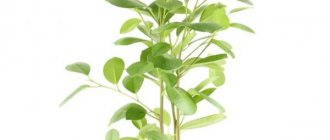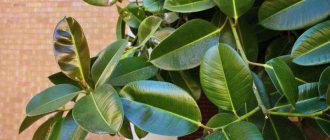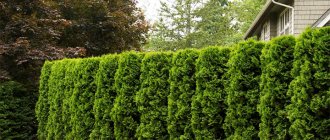Ficus lyrata is a perennial evergreen tree that is part of the Mulberry family. It began its existence in the form of an epiphyte, which was located at the top of the crown of other trees. Today, in natural conditions, the plant can be found in the form of an independent tree, the height of which can reach up to 15 meters.
This plant is native to tropical West Africa. In indoor culture, ficus lyreate is grown as a tree plant, the average height of which is about three meters. The wavy, dense leaf plates are quite large in size, and their surface is decorated with veins of a lighter color. This plant is very easy to care for, and it grows quite quickly: annual growth is about 25 centimeters. Remember that indoor ficus does not produce flowers, but such a perennial can be grown by an inexperienced gardener.
Features of ficus lyre-shaped
Ficus lyre-shaped will be a wonderful decoration for any interior, as it has a spectacular, unusual appearance due to large “corrugated” leaf plates. However, flower growers value this tree not only for its beauty. The fact is that it can saturate the air in a room with oxygen, clean it of harmful impurities, and also fill the home with favorable energy.
In addition, this plant is often used in the manufacture of various medicines that can help with a variety of diseases.
Brief description of cultivation
If you are looking for a plant that grows well at home and is undemanding in care, then you should pay attention to ficus lyre:
- Temperature regime . In summer the room should not be warmer than 28 degrees, and in winter - colder than 15 degrees.
- Air humidity . The optimal level is from 70 to 80 percent. Responds well to daily spraying.
- Illumination . Windows facing the south side of the room are best suited, but the bush needs shading.
- Watering . In the winter months, water once every 7 days, and in the summer - more than 4 times a week.
- Soil mixture . A fertile substrate with a slightly acidic reaction is suitable.
- Fertilizer . Feed no longer than 6 months once every 30 days, and use mineral complex fertilizers for this.
- Transplant . It is carried out once every couple of years, while for large specimens you can simply regularly replace the top layer of the substrate.
- Reproduction . Apical cuttings or layering.
- Trimming . Requires regular formative pruning, as well as supporting supports.
- Features of care . It responds well to ventilation, so it grows well on open loggias or terraces. While the leaf blades are young, they can often fold, leaving marks. In this regard, such foliage must be regularly monitored.











